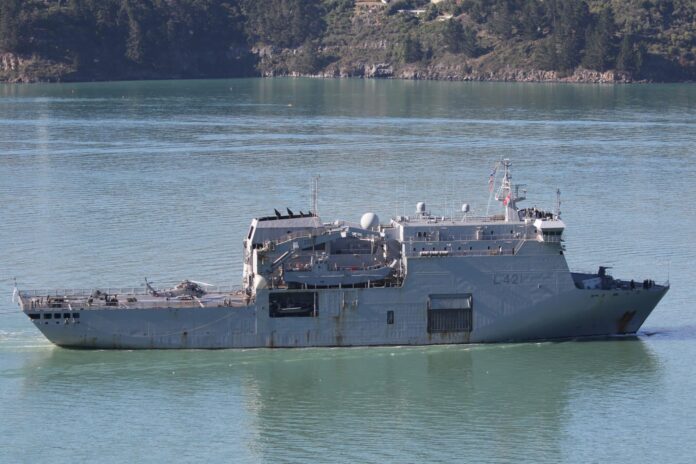
By Steven Paget*
The Five Eyes are really four eyes and a wink, according to a joke that derides New Zealand’s limited defence spending. Publication of the country’s 2025 Defence Capability Plan (DCP) may result in the saying being heard a bit less often.
Defence Minister Judith Collins opened the DCP by writing: “Our approach deliberately focuses on what we can and must do to re-build the [New Zealand Defence Force] and invest wisely in critical capability to ensure we are combat-capable, interoperable, and ready to be of use wherever we are needed.”
The NZ$12 billion commitment over the next four years will lift defence spending from just over 1 percent of GDP to more than 2 percent for the first time since the early 1990s. It sank as low as 0.99 percent in 2015.
The money will pay for enhanced strike capabilities, an anti-tank missile upgrade, life extension of the frigates, uncrewed boats and aircraft, systems for shooting down cheap drones, cyber and space capabilities and ground vehicles. In addition, funding has been allocated for improved intelligence, digital modernisation, enhanced information management and infrastructure upgrades.
New Zealand has long been accused of strategic apathy. But the DCP’s contents and the delay in its release as the government reassessed risk indicate a change in course. The document accepts that the nation ‘is facing its most challenging and dangerous strategic environment for decades’ against a backdrop of concerns about the United States withdrawing from the Asia-Pacific.
Public opinion has shifted in the same direction as the political outlook. A March RNZ-Reid Research Poll found 50.3 percent of respondents in favour of increasing defence spending, with only 31.9 percent against. US President Donald Trump complains that international partners spend too little on defence; the DCP should help redress this in New Zealand’s case. It should also diminish perceptions that New Zealand has been freeriding on Australia.
Aside from the commitment to enhancing the NZDF’s capability, the DCP is notable for its emphasis on international cooperation. Described as a foreign policy reset, the government of Prime Minister Christopher Luxon has consistently emphasised the importance of partnerships, including referencing the ANZUS Treaty and offering public backing for the Five Eyes intelligence network. While concerns have been raised that deepening defence ties with Australia and the US may compromise New Zealand’s independent foreign policy, partnership is central to the nation’s approach to defence.
New Zealand has frequently sought to make worthwhile contributions to coalition efforts. It has pledged to promote enhanced shared awareness and information management in the DCP, as well as ‘maintain credible, combat-capable forces’ that can operate independently and in cooperation with multinational partners. This includes ensuring special forces are interoperable with Five Eyes partners and committing NZDF frigates to making ‘meaningful contributions’ to global maritime security.
Renewed emphasis has been placed on the trans-Tasman defence relationship, including the requirement for a ‘more greatly integrated ANZAC force’. The DCP reinforced the intent of a 2024 Australia-New Zealand joint statement that committed to closer defence relations by enhancing interoperability and defence industry collaboration and reaffirmed support for the maintenance of the global rules-based order and Pacific sovereign security. The overall intention is to ensure that New Zealand is ‘more integrated’ with Australia, thereby making ‘both countries stronger together’.
Although the DCP did not address bilateral cooperation directly, the ongoing significance of New Zealand’s defence relationship with the US was implicit in its references to the Five Eyes relationship. Defence ties have burgeoned as the long shadow of the 1985 crisis, in which the US suspended its ANZUS alliance obligations to New Zealand, has receded, and it is not unreasonable to conclude that the US is one of New Zealand’s unnamed ‘closest international security partners’ referenced in the DCP, suggesting that ongoing cooperation will remain essential.
The DCP mentioned security relationships beyond the Five Eyes and, Australia specifically, including those with Indo-Pacific partners, the Association of Southeast Asian Nations and the partners in the Five Power Defence Arrangements. The relationship with Pacific Island countries is particularly important, with a commitment to deepen defence ‘engagement and cooperation’.
Despite the centrality of partnerships within the DCP, they may prove to be significant in a way that went unwritten. New Zealand’s defence relationship with Australia, Britain and the US has faced public scrutiny since the announcement of AUKUS, because the country was not invited to join. More recently, over the past two years, there has been significant debate about whether New Zealand should consider joining AUKUS Pillar Two, the part of the security partnership covering technologies other than nuclear submarines. While New Zealand has so far hesitated to take that step, it has been suggested that an uplift in defence spending, while required to enhance the capability of the NZDF, was also a necessary precursor to joining Pillar Two.
The DCP affirmed New Zealand’s position as a committed member of the Five Eyes, with its gaze fixed firmly on multinational cooperation to safeguard domestic and international security. Whether that commitment extends to membership of AUKUS Pillar Two remains to be seen.



